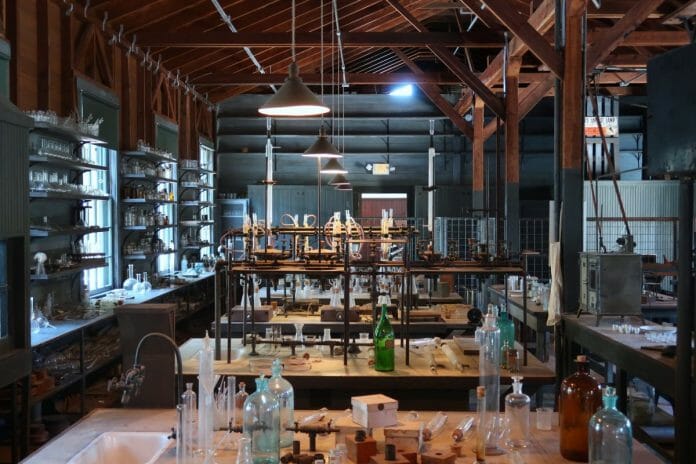Editor: What To Know
- In order to ensure the accuracy of your results, it is essential to use a reliable method for microplate closure and sealing.
- Use your fingers or a soft, clean brush to gently press the film or foil down so that it is in full contact with the well bottoms….
- Whether you are looking for a heat seal, adhesive seal, or a screw cap, there are many different types of closures available on the market.
Microplates are an important part of many laboratory procedures. They are often used for assays, gene expression studies, and drug discovery. In order to ensure the accuracy of your results, it is essential to use a reliable method for microplate closure and sealing. In this guide, we will discuss the different methods that can be used to achieve this goal. We will also provide tips on how to choose the right method for your needs.
1. What is a microplate, and what are its uses in research and diagnostics laboratories around the world today
To put it simply, a microplate is a small plate with multiple well structures that are used to hold samples for analysis. In research laboratories, microplates are commonly used in tasks such as high-throughput screening (HTS) and ELISA assays.
In diagnostic laboratories, microplates are used in tasks such as enzyme-linked immunosorbent assays (ELISA).
Microplates come in a variety of sizes and well structures. The most common microplate size in 96-well, but there are also 384-well and 1536-well microplates. The type of well structure depends on the application for which the microplate will be used. For example, U-bottom wells are often used in ELISA assays because they allow for better sample recovery.
No matter the size or well structure, all microplates have one thing in common: they need to be properly sealed before use. This is where microplate closure and sealing come into play.
2. The different types of microplate closures available on the market today
If you’re looking for a microplate closure, you’ll find that there are several different types available on the market today. Each type of closure has its own advantages and disadvantages, so it’s important to choose the right one for your needs. Here’s a quick overview of the most popular types of closures:
- Tight-sealing closures: These closures are designed to create a tight seal around the microplate, preventing sample evaporation and contamination. Tight-sealing closures are available in both screw-top and snap-top designs.
- Non-sealing closures: Non-sealing closures are less expensive than tight-sealing closures, but they don’t provide the same level of protection against sample evaporation and contamination.
- Vented closures: Vented closures allow air to flow in and out of the microplate, which is necessary for some types of experiments. Vented closures are available in both screw-top and snap-top designs.
3. How to choose the right closure for your specific application
Whether you are looking for a heat seal, adhesive seal, or a screw cap, there are many different types of closures available on the market. It is important to choose the right type of closure for your specific application to ensure optimal performance. Also, there are bespoke sealing solutions available for special applications. You can consult with a specialist to find the right closure for your needs.
When it comes to selecting the right closure, there are a few factors you need to consider:
- The type of microplate you are using
- The application you are using the microplate for
- Whether you need a one-time use or re-sealable closure
- The sealing temperature required
- The speed of the sealing process
Once you have considered all of these factors, you will be able to narrow down your options and choose the right type of closure for your microplate.
4. Tips for sealing your microplates effectively to ensure accurate test results
Assemble all of the equipment and materials you will need before beginning to seal your microplates. This includes:
- Sealing film or foil
- A flat, clean surface on which to work
- Tweezers (optional)
- A sharp knife or scissors
Cut the sealing film or foil into pieces that are slightly larger than the wells of the microplate. It is better to err on the side of too much film than too little, as you can always trim away the excess, but it is more difficult to add more once the sealing process has begun.
With clean hands, place the sealing film or foil over the microplate so that it covers all of the wells completely. Use your fingers or a soft, clean brush to gently press the film or foil down so that it is in full contact with the well bottoms and sides.
If using a sealing machine, follow the manufacturer’s instructions for placing the microplate in the machine and operating it. If sealing by hand, use a flat, hard object like a glass slide or metal spatula to apply even pressure over the entire surface of the microplate. Apply enough pressure to ensure good contact between the film and all well surfaces, but be careful not to press so hard that you distort the shape of the wells.
Allow the sealing process to finish completely before removing the microplate from the machine or lifting the flat object you are using to apply pressure. Once the microplate is sealed, store it in a cool, dry place until ready to use.
In the end, proper microplate closure and sealing are essential for cell-based assays. There are many different types of closures and seals available on the market, so it is important to select the right one for your specific application. With so many options available, it can be difficult to know where to start. Hopefully, this guide has given you a better understanding of the different types of closures and seals and how to select the right one for your needs. Thanks for reading!


